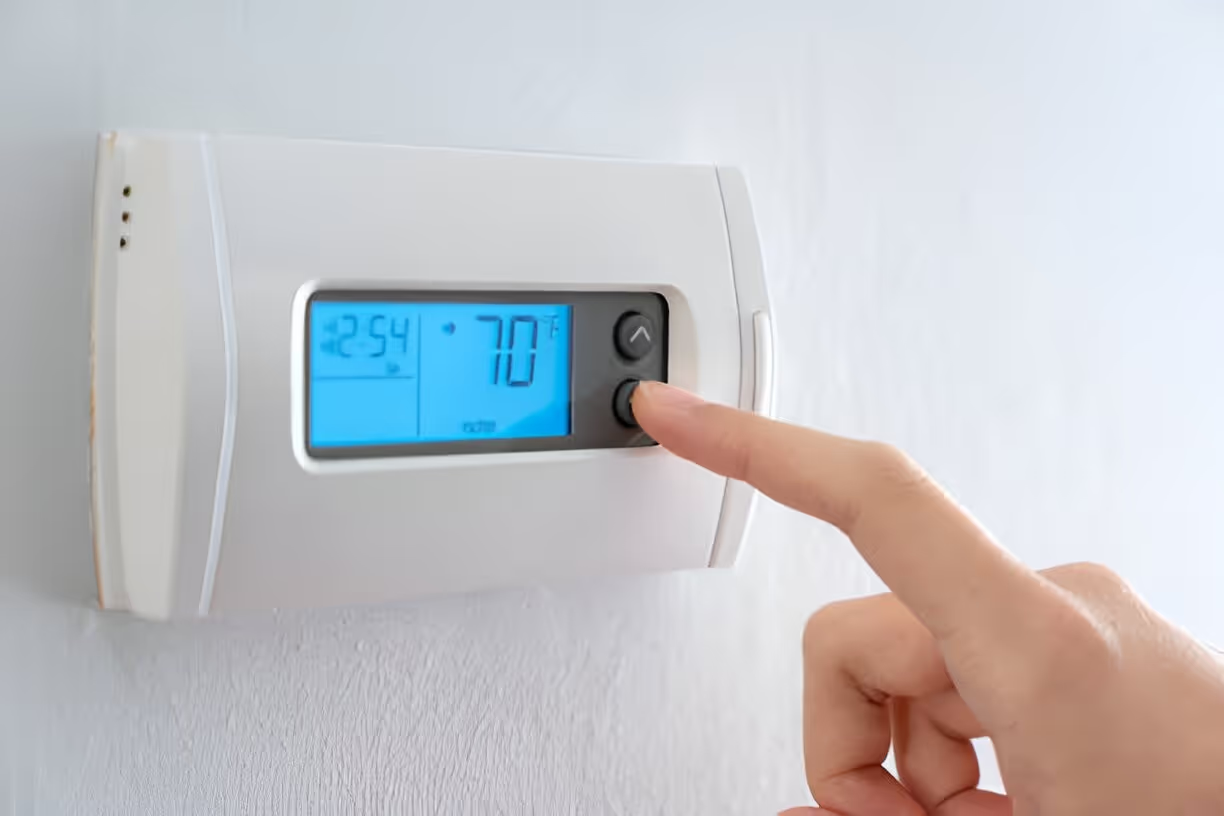Smart Thermostats in Wimauma, FL


Why choose a smart thermostat in Wimauma, FL
- Cooling-focused savings: Wimauma homeowners spend most of their HVAC energy on air conditioning. Smart thermostats optimize runtime, reduce unnecessary cooling, and coordinate with compressors or variable-speed equipment to lower electricity use.
- Humidity and comfort control: Smart schedules and adaptive learning help manage persistent humidity issues by optimizing cycles and integrating with whole-house dehumidifiers or AC staging.
- Remote monitoring for seasonal travel and storms: With hurricane season and frequent travel, remote control and alerts let you maintain safe temperatures and detect system problems before they escalate.
- Local rebate opportunities: Utilities and regional programs in Florida often offer rebates for smart thermostat upgrades. Financing options may also be available to spread installation costs.
Common smart thermostat types and features
- Wi-Fi connectivity for smartphone control and cloud-based features
- Learning schedules that adapt to occupancy patterns
- Zoning compatibility to manage multiple temperature zones independently
- Energy reports and usage dashboards that show savings and runtime
- Integration with voice assistants and smart home platforms like Google Home, Amazon Alexa, and Apple HomeKit
- Remote alerts for equipment faults, filter changes, or extreme temperatures
- Geofencing to adjust settings based on whether occupants are home or away
Common smart thermostat issues in Wimauma and quick explanations
- Compatibility problems with older systems: Older HVAC systems or proprietary controls may lack a common 24V power source (C-wire). A professional compatibility check prevents improper installation.
- Wi-Fi connectivity loss: South Hillsborough County neighborhoods can have varied home network setups. Weak Wi-Fi or interference prevents remote access and cloud features.
- Improper zoning integration: Zoning systems with motorized dampers require correct wiring and control routing to ensure each zone responds as expected.
- Humidity complaints despite temperature control: If a thermostat only controls setpoint and not dehumidification cycles, humidity can remain high. Integration with dehumidifiers or staged cooling often resolves this.
- Short-cycling or frequent compressor starts: Incorrect settings or a mismatch between thermostat and variable-speed equipment can shorten equipment life and reduce efficiency.
Compatibility checks with existing HVAC equipment
A professional service begins with a system assessment. Key checks include:
- Verifying the presence of a C-wire or safely installing a power adapter
- Confirming system type: single-stage, multi-stage, heat pump, or variable-speed
- Identifying control voltages and terminal labeling for safe wiring
- Checking zoning systems, damper control wiring, and compatibility with multiple thermostats
- Assessing whether any legacy controls or manufacturer-specific interfaces need adapters
Compatibility confirmations prevent the most common failures and ensure the smart thermostat can access the necessary sensors and controls to deliver energy savings and comfort.
Professional installation and setup process
- Pre-install inspection: Technician documents existing wiring, equipment model numbers, and control interfaces.
- Wiring and power setup: Install or adapt a C-wire if needed, or use a professional power-saver kit to maintain stable power to the thermostat.
- Physical installation: Mount thermostat, connect terminals, and verify secure wiring to the HVAC control board.
- System pairing and configuration: Connect thermostat to Wi-Fi, link it to relevant smart home platforms if requested, and configure system type (heat pump, AC, furnace) and stages.
- Zoning integration: Program zone thermostats and dampers so each zone follows its schedule and priority rules.
- Commissioning and diagnostics: Run system tests, verify proper cycling, check for short cycling, and review dehumidification behavior.
- User training: Walk through app basics, scheduling, geofencing, energy reports, and manual overrides so homeowners feel confident using the system.
- Documentation: Leave a clear summary of settings, wiring changes, and tips for seasonal adjustments.
What to expect in energy savings and performance
Smart thermostats typically reduce HVAC energy use by optimizing setpoints, limiting runtime when the home is unoccupied, and improving equipment cycling. In cooling-dominant climates like Wimauma, homeowners often see meaningful reductions in monthly electric use. Typical results:
- Energy savings commonly range from 8 to 15 percent on HVAC-related energy use, depending on behavior, home insulation, and equipment efficiency
- Greater savings occur when combined with sensible setpoint strategies, proper insulation, and efficient ductwork
- Smart scheduling and zoning can improve comfort while concentrating cooling where it is needed, reducing wasteful whole-house cooling
Actual savings depend on factors such as home size, insulation, duct leakage, how often occupants change setpoints, and whether zoning is implemented.
User training, ongoing support, and maintenance
To maintain performance and avoid common pitfalls, homeowners should follow a few straightforward practices:
- Keep thermostat firmware updated and maintain a stable Wi-Fi password to preserve remote features
- Review weekly energy reports to spot unusual runtime patterns that could indicate a system problem
- Replace HVAC filters on schedule and enable filter reminders in the app
- Adjust seasonal schedules for fall and spring to reflect changing outdoor conditions
- Test zone dampers and airflow annually to ensure even cooling distribution
- Schedule professional HVAC tune-ups annually, or more often if equipment is older
Training typically includes how to change schedules, interpret energy reports, use geofencing, and troubleshoot connectivity issues.
Rebates and financing options for Wimauma homeowners
Many Florida utilities and energy-efficiency programs offer rebates or incentives for smart thermostat upgrades, especially when paired with other home efficiency measures. Financing options are often available through home improvement or energy-efficiency programs to spread installation costs. A professional installation service will perform a rebate eligibility check and provide required documentation to support any application or claim.
Final notes on value and long-term benefits
Smart thermostats in Wimauma, FL, deliver tangible benefits by aligning HVAC performance with the local climate. They reduce cooling-related energy use, improve indoor comfort during muggy summers, and add remote monitoring that is useful during travel and severe weather seasons. Professional compatibility checks and installation maximize reliability, prevent common pitfalls, and ensure your smart thermostat works with your specific HVAC setup. With proper setup and a little homeowner engagement, smart thermostats become a practical long-term investment in comfort, control, and energy savings.
Service Areas


